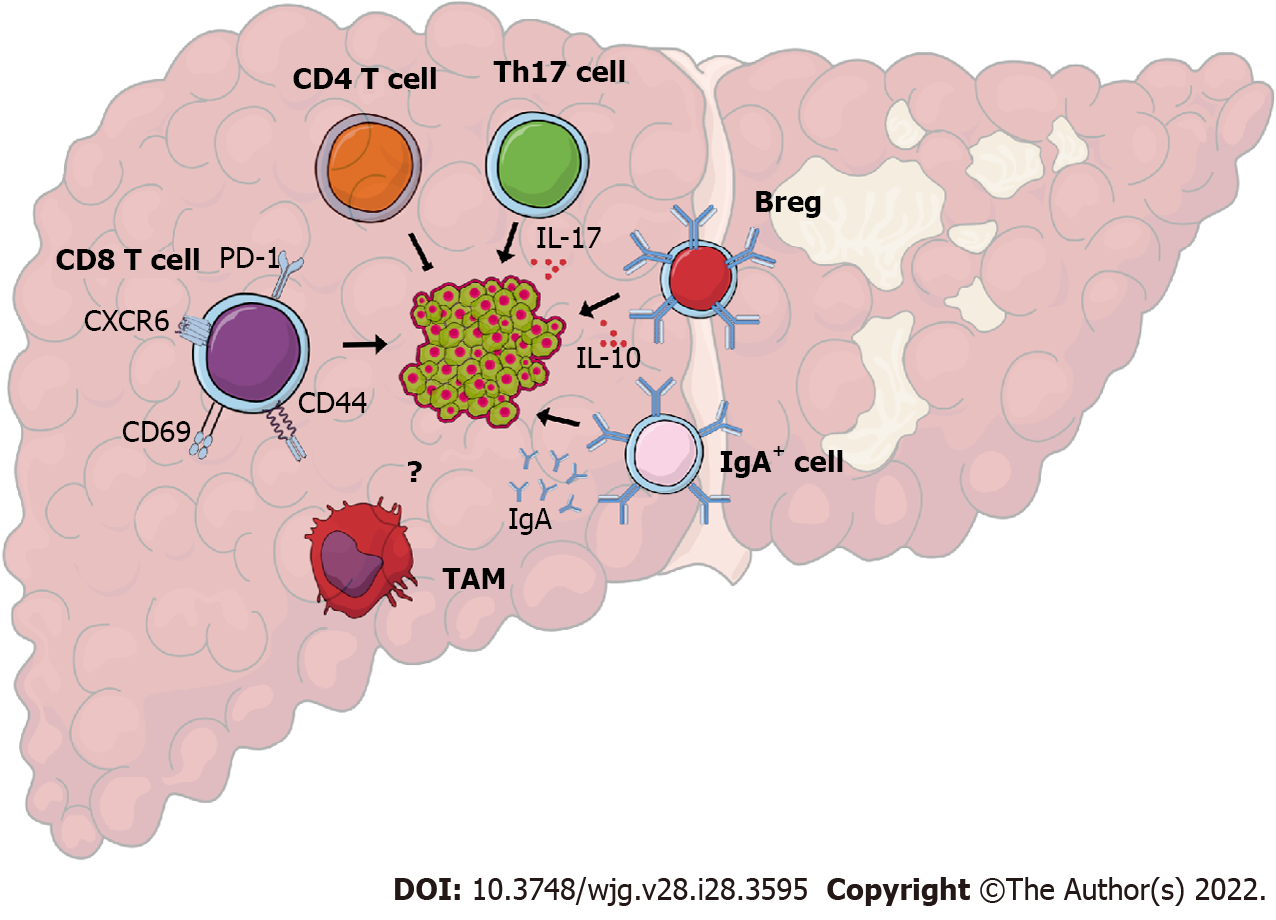Copyright
©The Author(s) 2022.
World J Gastroenterol. Jul 28, 2022; 28(28): 3595-3607
Published online Jul 28, 2022. doi: 10.3748/wjg.v28.i28.3595
Published online Jul 28, 2022. doi: 10.3748/wjg.v28.i28.3595
Figure 1 Immune mechanisms in nonalcoholic fatty liver disease-related hepatocellular carcinoma pathogenesis.
Studies using human specimens and mouse models have shown that activated non-alcoholic steatohepatitis-associated, programmed cell death protein 1 + CD8 T cells can cause non-specific cell death of hepatocytes and promote hepatocellular carcinoma development. T helper 17 cell-derived interleukin-17, immunoglobulin A-producing cells promote non-alcoholic steatohepatitis-derived hepatocellular carcinoma development, while an overall loss of CD4 T cells may increase tumor burden size. Bregs are abundant in hepatocellular carcinoma and promote disease progression, but are not specific to nonalcoholic fatty liver disease-related hepatocellular carcinoma. The role of tumor associated macrophages in the progression of nonalcoholic fatty liver disease-related hepatocellular carcinoma is unclear. Figure created in the Mind the Graph platform, available at www.mindthegraph.com. Th: T helper; PD-1: Programmed cell death protein 1; IL: Interleukin; Bregs: Regulatory B cells; IgA: Immunoglobulin A; CXCR6: C-X-C Motif Chemokine Receptor 6; TAM: Tumor associated macrophages.
- Citation: Mattos ÂZ, Debes JD, Vogel A, Arrese M, Revelo X, Pase THS, Manica M, Mattos AA. Non-alcoholic fatty liver disease-related hepatocellular carcinoma: Is there a role for immunotherapy? . World J Gastroenterol 2022; 28(28): 3595-3607
- URL: https://www.wjgnet.com/1007-9327/full/v28/i28/3595.htm
- DOI: https://dx.doi.org/10.3748/wjg.v28.i28.3595









